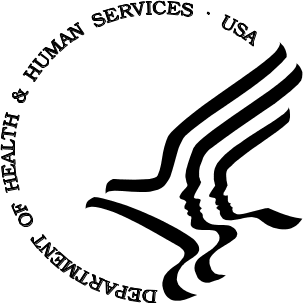QDRL 4 sets of questions letter
QDRL 4 sets Health Related Qs 10-day letter-0827 2012.docx
NCHS Questionnaire Design Research Laboratory
QDRL 4 sets of questions letter
OMB: 0920-0222
 DEPARTMENT
OF HEALTH & HUMAN SERVICES Public
Health Service
DEPARTMENT
OF HEALTH & HUMAN SERVICES Public
Health Service
Centers for Disease Control and Prevention
 National
Center for Health Statistics
National
Center for Health Statistics
3311 Toledo Road
Hyattsville, Maryland 20782
August 27, 2012
Margo Schwab, Ph.D.
Office of Management and Budget
725 17th Street, N.W.
Washington, DC 20503
Dear Dr. Schwab:
The staff of the NCHS Questionnaire Design Research Laboratory (QDRL) (OMB No. 0920-0222, exp. 06/30/2015) plans to conduct research to evaluate 4 sets of health related questions: 1) questions on child disability for use in surveys for the Washington Group on Disability Statistics (WG) with the participation of UNICEF; 2) questions on the death rate for the Federal Statistical System (FSS) Public Opinion Survey; 3) questions on health insurance for use in the American Community Survey; and 4) questions on second hand smoke for the National Health and Nutrition Examination Survey (NHANES).
We propose to start advertising for volunteer participants as soon as we receive clearance and to start testing as soon as possible after that.
Background Information about Cognitive Testing of Questionnaires
The methodological design of this proposed study is consistent with the design of typical cognitive testing research. As you know, the purpose of cognitive testing is to obtain information about the processes people use to answer survey questions as well as to identify any potential problems in the questions. The analysis will be qualitative.
Proposed project: Cognitive testing of four sets of health related questions
The four sets of health related questions that we are evaluating appear in Attachment1. The testing procedure conforms to the cognitive interviewing techniques that have been described in our QDRL generic OMB clearance package.
The questions on child disability were developed as part of the Washington Group’s (WG) collaboration with UNICEF. UNICEF is interested in replacing the ten question disability screener they use on their international household Multiple Indicator Cluster Survey (MICS) and approached the WG on forming a collaboration. The WG had been planning on developing questions for children at some point in the future. The UNICEF collaboration offered a nice impetus. UNICEF sponsored two development meetings – one in Rome for the WG and a larger meeting at the UN where they brought in child development experts. The question set we are testing was the product of those meetings. NCHS agreed to test the questions and there are initial commitments from India, Belize, Oman, and the Philippines to test them as well. We plan to test the questions as submitted so we are comparable with the other countries. The aim of this test is similar to that for the initial testing of the WG questions –to see how the questions are interpreted in terms of activities covered and meaning of response categories. The testing of the adult general set indicated that adults pretty much answered without help or aids. Hence, we would like to test to see if this is also true for children. We might request an additional round of testing of the child disability questions in the future under a separate genIC depending on the results we get from this first round.
We propose to recruit 25 adults (aged 18 and over who meet the following criteria: 1) have children aged 2-17 living in the household who may have difficulty with seeing, hearing, walking, learning, and/or behavior; 2) have an awareness of death rates in the U.S.; and 3) smoke cigarettes. In addition, we will also recruit some adults without these specified characteristics. The newspaper advertisement/flyer used to recruit respondents is shown in Attachment 2. Within these constraints, we hope to recruit participants with some demographic variety (particularly in terms of gender, education, race/ethnicity, and income).
Interviews will be conducted by QDRL staff members in the QDRL with individual English and Spanish speaking respondents for 60 minutes each. The child disability, the death rate questions, and the second hand smoke questions will be interviewer administered. The health insurance questions may be interviewer administered or simulated mail, phone or web in the lab environment.
With the consent of the participants, the interviews will be recorded on videotape or audiotape. Participants will be informed of taping procedures (including observation if applicable) in the process of reviewing the consent forms, and the equipment will be turned on once it is clear that the procedures are understood and agreed upon.
We propose paying respondents $50 for their participation, which is $10 over our standard payment. Given the recruitment of parents with children aged 2-17 living in the household who may have difficulty with seeing, hearing, walking, learning, and/or behavior is most important to this study, we hope the extra $10 above our $40 standard payment will increase participation and reduce the number of cancelations and no shows.
In total, for this project, the maximum respondent burden will be 25 hours of interviewing in addition to travel time. The burden is already accounted for in the generic clearance. An updated burden table for this genIC project is shown below:
Projects |
Number of Participants |
Number of Responses/ Participant |
Average hours per response |
Response burden |
QDRL Interviews |
|
|
|
|
2) Other questionnaire testing |
25 |
1 |
1 |
25 |
Attachments (2)
cc:
M. Moien
T. Richardson
DHHS RCO
| File Type | application/vnd.openxmlformats-officedocument.wordprocessingml.document |
| Author | CDC User |
| File Modified | 0000-00-00 |
| File Created | 2021-01-30 |
© 2025 OMB.report | Privacy Policy